Rising Safety Standards
The implementation of stringent safety standards across various industries is a notable driver for the Hoist Chains Market. As organizations prioritize worker safety, the demand for high-quality hoist chains that meet safety regulations is increasing. Industries such as manufacturing, construction, and logistics are particularly affected, as they require reliable lifting equipment to minimize workplace accidents. Recent data suggests that The Hoist Chains Market is projected to grow significantly, which may lead to increased investments in hoist chains that comply with safety standards. This trend indicates that manufacturers in the Hoist Chains Market must focus on producing hoist chains that not only meet performance criteria but also adhere to evolving safety regulations, thereby enhancing their market competitiveness.
Increasing Industrial Automation
The rise in industrial automation is a pivotal driver for the Hoist Chains Market. As industries increasingly adopt automated systems to enhance efficiency and productivity, the demand for hoist chains is likely to surge. Automated systems require reliable lifting solutions, and hoist chains are integral to these operations. According to recent data, the industrial automation sector is projected to grow at a compound annual growth rate of approximately 9% over the next few years. This growth is expected to translate into heightened demand for hoist chains, as they are essential components in automated material handling systems. Consequently, manufacturers in the Hoist Chains Market are likely to focus on developing advanced hoist chain solutions that cater to the needs of automated environments.
Expansion of Construction Activities
The ongoing expansion of construction activities serves as a significant driver for the Hoist Chains Market. With urbanization and infrastructure development on the rise, the construction sector is experiencing robust growth. This growth is reflected in the increasing demand for hoist chains, which are crucial for lifting heavy materials and equipment on construction sites. Recent statistics indicate that the construction industry is expected to grow at a rate of around 5% annually, leading to a corresponding increase in the need for reliable hoisting solutions. As construction projects become more complex, the demand for specialized hoist chains that can handle varying loads and conditions is likely to intensify, prompting innovation within the Hoist Chains Market.
Growing Demand from the Logistics Sector
The logistics sector's growth is a crucial driver for the Hoist Chains Market. As e-commerce continues to expand, the need for efficient material handling solutions is becoming increasingly important. Hoist chains play a vital role in warehouses and distribution centers, facilitating the movement of goods and materials. Recent reports indicate that the logistics industry is expected to grow at a compound annual growth rate of around 7% in the coming years, which will likely lead to heightened demand for hoist chains. This trend suggests that manufacturers in the Hoist Chains Market must adapt to the evolving needs of the logistics sector by offering versatile and efficient hoisting solutions that can accommodate the rapid pace of operations.
Technological Innovations in Hoisting Equipment
Technological innovations in hoisting equipment are driving advancements in the Hoist Chains Market. The integration of smart technologies, such as IoT and automation, is transforming traditional hoisting solutions into more efficient and user-friendly systems. These innovations enable real-time monitoring and predictive maintenance, which can significantly reduce downtime and enhance operational efficiency. Recent market analyses indicate that the adoption of smart hoisting solutions is expected to grow, with a projected increase in demand for technologically advanced hoist chains. As industries seek to optimize their operations, manufacturers in the Hoist Chains Market are likely to invest in research and development to create innovative hoist chain solutions that leverage these technological advancements.


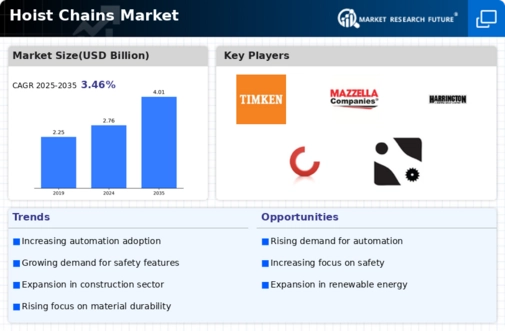
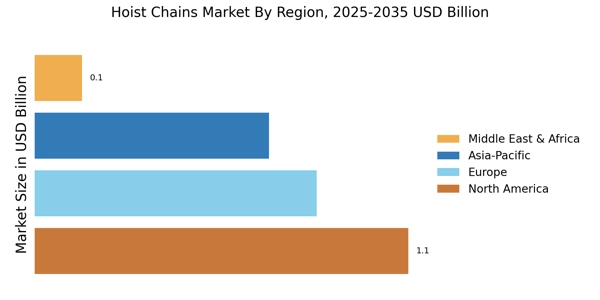
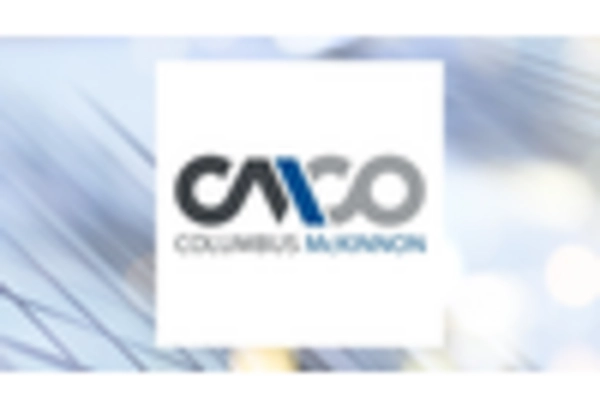
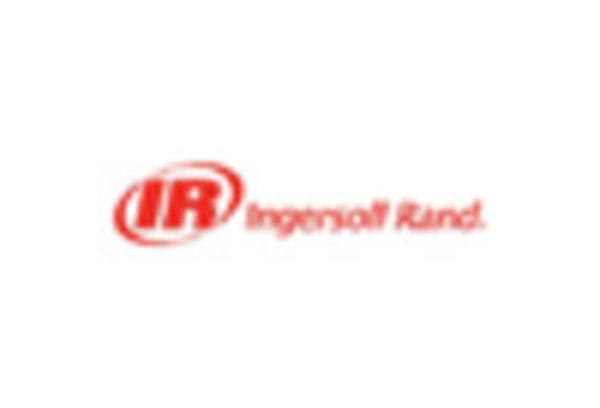


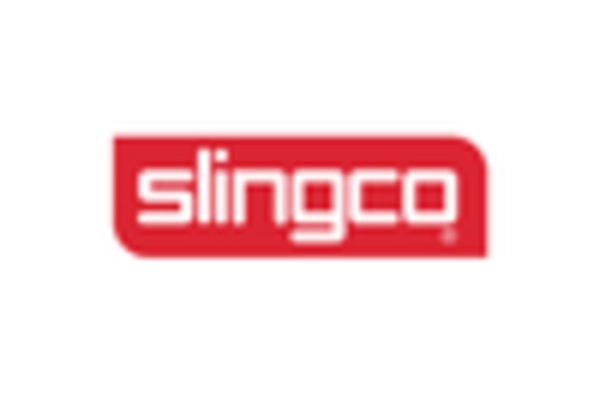









Leave a Comment